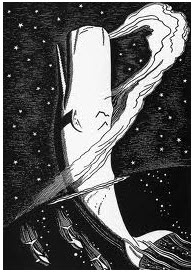 Those of you who know me know I’m obsessed with Moby Dick. Not nearly as obsessed as Ahab was with him, but still pretty (ridiculously) obsessed. So I wanted to carve out a little time today to say it was on this day in 1851 that Moby Dick; or, The Whale was published in the US by Harper. It was published a month earlier in the UK, but this was its American debut. Hermie was all of 32 when he wrote it.
Those of you who know me know I’m obsessed with Moby Dick. Not nearly as obsessed as Ahab was with him, but still pretty (ridiculously) obsessed. So I wanted to carve out a little time today to say it was on this day in 1851 that Moby Dick; or, The Whale was published in the US by Harper. It was published a month earlier in the UK, but this was its American debut. Hermie was all of 32 when he wrote it.
A Companion to Herman Melville. I’ll leave off the obvious joke of “perhaps his only one!” and say that this e-book is a fun skim/read if you’re as obsessed as I. It’s got a chapter called “The language of Moby Dick: Read it if you can” cuz… yeah, that’s its reputation. A pretty obtuse book. But there is humor in it, loads of history, more than you’d ever want to know about whaling, a long, boring catalog of whales, and an eye-bleeding chapter on what white is. And underneath it all, a seriously great story.
Literature Resource Center has got biographies of Melville, reviews and criticism, and topic and work overviews.
Literature Criticism Online has loads of criticism taken from several different sources – some criticisms contemporary to its public ation (it was not well received).
ation (it was not well received).
Why Read Moby Dick? This title pretty much says it all.
In the Heart of the Sea: The Tragedy of the Whaleship Essex is nearly the same story as Moby Dick but so very much more enjoyable and readable. You can see how this story inspired Melville to write Moby Dick. And you can read accounts of the Essex in several newspapers of the day (use Proquest Historical Newspapers to read the articles- search on whaleship essex).
For those of you who want to celebrate but don’t want to lose whole weeks of your life, I highly recommend Sam Ita’s Moby Dick: A Pop-up Book. Rest assured I do not have this checked out (I have my own copy. Doy).
The American artist Rockwell Kent illustrated Moby Dick for the Modern Library publication (that’s a Rockwell Kent illustration above). Some of these illustrations can be found in ARTstor. Also in ARTstor are images from the Gregory Peck film version and Laurie Anderson’s Songs and Stories from Moby Dick – a performance piece she presented in Brooklyn in 1999. I was there. Cuz I’m just that obsessed.
If you prefer learning through audio, Smithsonian Global Sounds has several sea shanty albums, including the musical film score: Whaler out of New Bedford, and Other Songs of the Whaling Era. If you’re going to listen to sea shanties, you simply cannot skip over the most brilliant compilation of sea shanties sung by some of the best interpreters of the genre: Classic Maritime Music from Smithsonian Folkways. I’m sure a lot of you are going to trust me on this one, but sooner or later your curiosity will get the better of you and you’ll give this a listen. And you will be hooked. Or I suppose I should say you’ll be harpooned. There’s another really interesting album on Smithsonian Global Sound called American Storytellers, Vol. 3. On it a few men tell their stories of hunting whales and surviving shipwrecks. You know, it’s really quite interesting. There’s also a volume 1 that has similar tales.
If you can overlook the shifting narrative and Hermie’s absurd tendencies to go on and on ad nauseum, you may join some in considering it the greatest American novel. I don’t go that far. But I will say, it’s worth a read (probably not worthy of obsession, but I seem to be stuck with it). And it was published 160 years ago today. Happy birthday (American) Moby Dick!